by Jim Cordon
EXPLANATIONS OF STEREO recording are frequent, but there seems to be little about practical microphone use. Here are some suggestions:
For basic two-channel stereo, our ears want to hear some left information, some right information, and some information common to both channels. Suppose we record two acoustic guitars playing together, each on its own separate track, basically two mono signals. Playback of two mono signals sounds OK on speakers, because some of the sound from each speaker reaches the opposite ear. But listening to the two mono signals with earphones is uncomfortable and sounds unnatural. Now suppose we record a third guitar, playing in sync with the first two, on its own separate track.
Then we play it back in the center, that is to both left and right speakers, along with the first two guitar tracks. Adding this center mono signal common to both sides satisfies our ear's desire for sound common to both channels. It sounds good on both speakers and earphones.
Some might say that this isn't "real stereo," only three mixed mono sources. I'd like to answer this by saying that different styles of miking are only different tools. You wouldn't use a screwdriver to pound a nail or a hammer to turn a screw. Whatever type of miking that sounds best to you is right; there are no hard and fast rules.
Two Channels
Suppose you're recording two sound sources, a singer and a piano. You might place a microphone close to each, making basically two mono recordings. Or you could put the mics closer to each other, so that upon playback, each ear hears some sound common to both. Our ears want some of that, remember. Recording this way would have less stereo separation, but might be aesthetically more pleasing. More toward "real stereo." But in the first case on the piano, you could use a mic best for recording the piano. And the same with the singer. The closer you get to "real stereo," the more two matched microphones of the same kind are necessary.
The simplest way to record stereo is to set two cardioid mics, in front of the sound source, just as you would sit in front of two stereo speakers. This is a good way to record where the principal sounds or performers tend to arrange themselves in a straight line, as on a stage or bandstand.
Try this: (Fig. 1) Draw line LR between the extreme right and left front sound sources (not the edges of the stage). Make an equilateral triangle so that LR=LM=RM. Bisect LM and RM, and at those spots put two cardioid mics facing straight forward. Don't angle them. You'll get a recording that has good stereo effect, no hole-in-the-middle, and reproduces the original balance. It's important to measure the set-up carefully; if you just estimate the dimensions it won't work very well. Hang the mics from the ceiling if you like. Use the same formula and do your measuring on the floor. Aim the mics straight ahead and angle them down toward a point mid-way between the front and back of the stage.
Sometimes it's desirable to put both mics on one stand. Atlas makes a TM-1 "twin-microphone mount" that supports two mics on one stand. For most situations use two cardioids at a 90° angle to each other (Fig. 2).
To record a stage performance (Fig. 3), draw line LR between the extreme right and left sound sources. Bisect LR, at M. Draw perpendicular line MX equal to ' LR. Put your mics at X.
If the sound source is within a foot or two of the microphones, you may get a hole-in-the-middle, so angle the microphones in a bit. If you can monitor with earphones, snap your fingers or jingle car keys back and forth while you're "angling" to eliminate the hole-in-the-middle. If the sound source is a very large distance away, you may want to angle the microphones outward, although at large distances both mics tend to receive the same sound. Monitoring with earphones again helps.
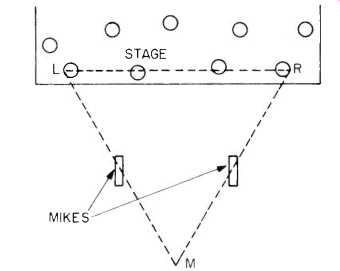
Fig. 1-Recording a stage performance with two cardioids.
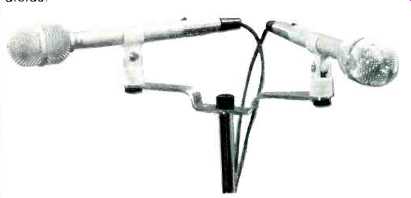
Fig. 2-Two E-V RE-16s in Atlas TM-1 mount.
Four Channels
One simple way to record four-channel sound (on a two-channel recorder) is to use a stereo mic made of two bidirectional sections, such as a Bang & Olufsen BM-5. This mic consists of two bi-directional ribbon elements. If you set the two sections 90° apart, sounds from in front and back of the mic will be in phase, while sounds from the sides will be out-of-phase, producing matrixed four-channel recording. Ideally, it should be played back thru a Dynacotype decoder, but other types will work well too.
To record a stage performance, place the microphone as shown in Fig. 3. Set it to 90°. Aim the 45° mark on the mic toward the stage. What if your sound sources have no "front line," like a string quartet? Place the mic in the middle, 6 to 8 feet in the air if possible.
If you have a four-channel recorder, you can use four mics close to the sound sources. 1/8-in. aluminum. A local machine shop made this one for me. The holes have 5/8"-27 threads.
The upright pieces are Atlas AD-7 3-in. tubes. Use four cardioids at 90° angles to each other. To record a stage performance, use the set-up shown in Fig. 3.
Additional Notes It goes without saying that your microphones should be in phase. They should be the same make and model, unless you're just recording simultaneous mono sounds. It's a good idea to balance your levels on the recorder before recording.
A cheap portable FM radio can be a handy tool here; tune the radio in between stations to get the white-noise "rushing" sound. Set the radio volume to a level comparable to what is to be recorded, if possible. Put the radio midway between the mics, so that they both receive an equal amount of sound.
Set the mic level controls on the recorder so that the VU meters read the same.
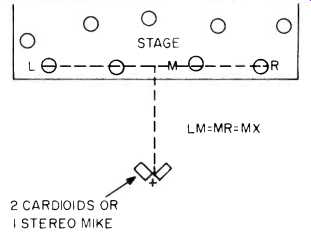
Fig. 3-Recording a stage performance with two cardioids or one stereo
mic.
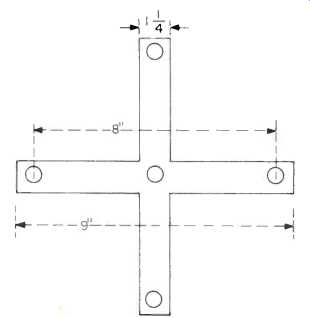
Fig. 4-Four-channel mic fixture
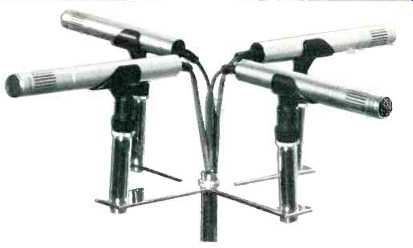
Fig. 5-Four Sony ECM-21s on four-channel mic fixture.
---------------------
(adapted from Audio magazine, Dec. 1973)
Also see:
The Evolution of Four-Channel Equipment (Jul. 1973)
Microphones--The Vital Link in the Recording Chain (Dec. 1973)
Why You Should Buy Four-Channel Now (Jul. 1973)
Quadraphonic Headphones (Jun. 1973)
= = = =